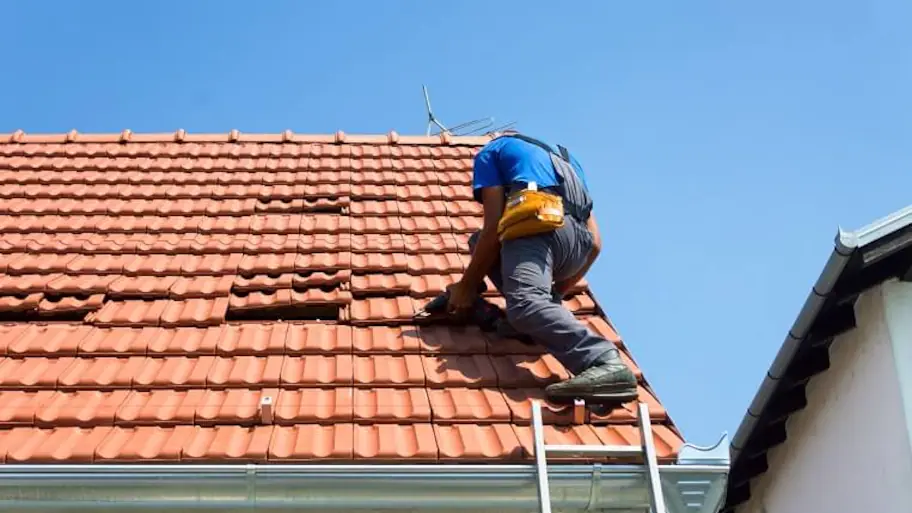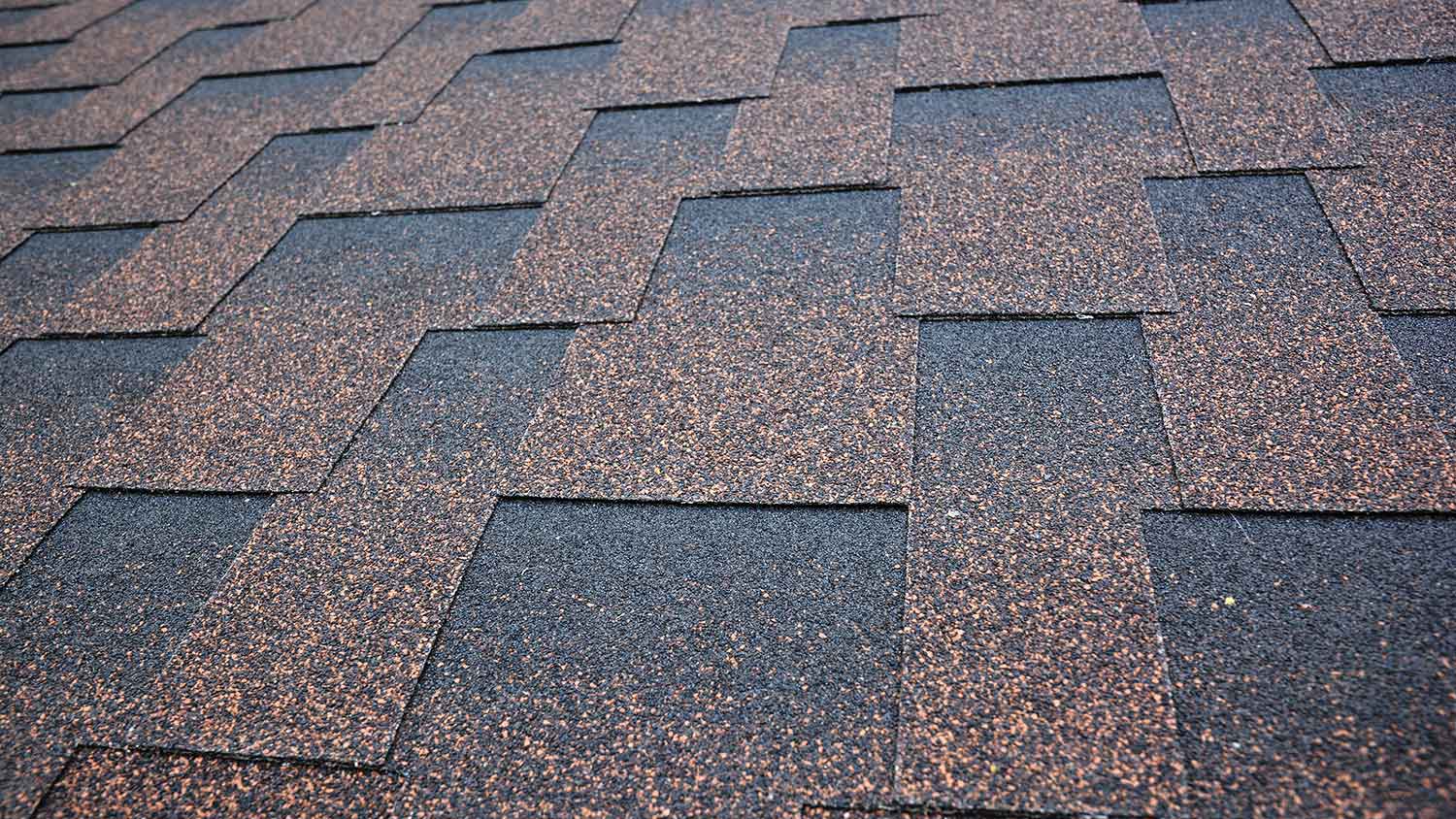
The average cost of roof repair for U.S. homeowners averages between $386 and $1,875. Learn what factors can affect roof repair costs.
It’s important to keep your shingles shipshape


Shingle granules are the grit embedded in the surface of a roof shingle.
If you notice patches of shingles that look bare, that’s a sign of shingle granule loss.
If the shingles that have lost their granules are contained to a small area and the roof is otherwise in good shape, you can simply replace the damaged shingles.
If the problem is more widespread and the roof is near the end of its lifespan, it might be better to replace the entire roof.
Ever wonder why your asphalt roof shingles have a gritty surface? Shingle granules help protect your home from the elements, and when shingles start to lose those granules, your home is more susceptible to damage. Learn more about shingle granules and what granule loss means for your roof.
Shingle granules make up the top layer of asphalt shingles and give the shingles their texture. Granules are made from crushed stone or other minerals embedded into the asphalt. Shingle granules have a number of functions, including:
UV and heat protection
Water resistance
Algae prevention
Fire resistance
Non-slip texture for installation and repairs
Over time, shingles lose their granules. Weather factors like extreme heat, prolonged exposure to UV rays, roof hail damage, wind damage to roof shingles, and heavy or sustained rain can cause the granules to deteriorate and wear away or fall off the shingles. Granule loss can also be caused by foot traffic from roof repairs or other work involving roof access, debris impact or friction, pressure washing, and improper installation.
Granule loss is expected over the life of asphalt shingles, but it’s important to know when there’s enough loss to cause serious and potentially costly problems.

Because shingle granules provide significant UV protection, once the shingles experience granule loss, they’re more susceptible to damage from the sun. UV exposure on unprotected shingles can lead to cracking, splitting, and curling shingles, and with this kind of damage, your asphalt shingles will last a much shorter time than expected.
Granule loss also reduces your roof’s ability to repel water. Without the outer layer of protection from rain and snow, water can enter your roof, leading to leaks, mold growth, and structural damage to roofing components. Over time, shingles with granule loss can cause your roof to quickly deteriorate, which may make a full roof replacement necessary sooner than you’d planned.
To identify granule loss, look for shingles with “blad spots” or areas that appear flat when compared to the texture of other shingles. Take extra care to look low on the roof near your gutters and downspouts. Shingles that appear to be a different color from surrounding shingles can also be a sign of granule loss, as granules help give shingles their color.
After a storm, check for signs of roof storm damage or wind damage to your roof—granule loss can happen as a result of severe weather, so you may be able to spot it then. A professional inspection from a local roof repair company can also identify granule loss as well as any other roof problems that might need to be addressed.
So when is it time to budget for the cost of roof shingle repair or replacement? If granule loss is only present in a few places and your roof is in good shape otherwise, you might only need to replace the damaged shingles. More widespread granule loss on a roof that’s nearing the end of its life span may have you spending more than just roof repair cost—it might be time for a full roof replacement.
Consult with a pro who fixes roofs to assess your roof’s condition and advise you about shingle or roof replacement. Your roof protects your biggest investment, so you want to make sure it’s in the best possible condition.
From average costs to expert advice, get all the answers you need to get your job done.

The average cost of roof repair for U.S. homeowners averages between $386 and $1,875. Learn what factors can affect roof repair costs.

Asphalt shingle roofs are the most common roof type in the U.S. Learn about average shingle roof costs and the factors that can affect your total.

Need to add to your shed’s life span and protect your belongings inside? Use this shed roof replacement cost guide to see what your project will total.

Understanding roof rafter sizes is critical to ensure your project is structurally sound and up to code. Learn about sizes, spacing, and code requirements.

Roof sealant helps protect your roof from the elements. Learn about different types of roof sealant and how to pick the right one for your roof.

Most roofing professionals are hardworking and ethical, but there are a few bad apples to watch out for. Learn how to avoid the 12 most common roofing scams.